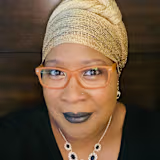The Ingredients You Should Avoid (And How They Trick You)
The Ingredients You Should Avoid (And How They Trick You)
Originally Posted on Jezebel’s Daughter
By Jezareal (Joy C. Rojas)
Don’t Be Blinded By “Green” and “Clean” Buzzwords.
The beauty and skincare industry thrives on clever marketing, using vague or misleading terms to make products sound safer, cleaner, and more natural than they actually are. If you’re committed to using truly clean, non-synthetic products, it’s crucial to understand the code words and hidden ingredients designed to confuse consumers.
This guide will help you spot red flags on ingredient labels, break down common deceptive buzzwords, and uncover the real names behind harmful additives.
The Deceptive Buzzwords (What They Want You to Think vs. Reality)
1. Naturally Derived – Sounds safe, right? Wrong. This means an ingredient started from a natural source but has been heavily processed (often with synthetic chemicals).
2. Botanical Complex / Herbal Infusion – Used to imply the presence of natural plant extracts, but in many cases, these are present in such trace amounts that they offer no real benefit. The bulk of the formula may still be synthetic.
3. Fragrance / Parfum / Perfume – This catch-all term can hide hundreds of synthetic chemicals including phthalates, which disrupt hormones and cause skin irritation. If a brand doesn’t specify what’s in their fragrance, assume it’s not natural.
4. Hypoallergenic – This means absolutely nothing. There are no legal standards for this term, meaning a brand can use it even if a product contains known allergens.
5. Preservative-Free – Some products need preservatives to stay safe, but this term is often used to imply a formula is “clean.” Many brands simply swap traditional preservatives for less-tested, equally synthetic alternatives.
6. No Harsh Chemicals – Who defines what’s “harsh”? Not the FDA. This term is meaningless unless the brand explicitly lists what they’re avoiding.
The Ingredients You Should Avoid (And Their Hidden Names)
Many harmful ingredients are disguised under different names to make them harder to recognize. Here’s what to look out for:
Silicones & Plastics (Synthetic Film-Formers)
Dimethicone, Cyclopentasiloxane, Cyclohexasiloxane – These give products a “silky” feel but can trap debris and suffocate the skin.
Acrylates Copolymer, Polyethylene, Polypropylene – These are microplastics that contribute to environmental pollution and can clog pores.
Artificial Preservatives & Stabilizers
Phenoxyethanol – Used as a “safer” alternative to parabens but can cause neurological and reproductive toxicity at high doses.
BHT & BHA – Synthetic antioxidants linked to endocrine disruption and organ toxicity.
Formaldehyde-Releasing Preservatives – Look for DMDM Hydantoin, Imidazolidinyl Urea, Diazolidinyl Urea, Methenamine, and Quaternium-15. These ingredients release formaldehyde over time, a known carcinogen.
Petroleum-Based Ingredients (Cheap Fillers & Occlusives)
Mineral Oil, Petrolatum, Paraffin – Often contaminated with carcinogenic byproducts from petroleum processing.
Propylene Glycol, PEGs (Polyethylene Glycol) – Can be contaminated with ethylene oxide and 1,4-dioxane, both linked to cancer.
Synthetic Fragrances & Dyes
“Fragrance”, “Parfum”, or “Perfume” – As mentioned above, this can contain hundreds of undisclosed chemicals.
Artificial Dyes (FD&C Colors, Red 40, Yellow 5, Blue 1, etc.) – Can be contaminated with heavy metals and linked to skin irritation.
Sulfates (Harsh Detergents)
Sodium Lauryl Sulfate (SLS) & Sodium Laureth Sulfate(SLES) – Found in cleansers, these strip natural oils, disrupt the skin barrier, and cause irritation.
Endocrine Disruptors (hormone-Interfering Chemicals)
Phthalates (Dibutyl Phthalate, Diethyl Phthalate, DBP, DEP) – Found in “fragrance,” linked to reproductive issues and hormone imbalance.
Triclosan & Triclocarban – Antibacterial agents that contribute to antibiotic resistance and hormone disruption.
How to Protect Yourself
Read labels carefully! If an ingredient sounds overly scientific or unfamiliar, look it up before using.
Don’t trust “green” packaging alone. Just because a product looks “earthy” doesn’t mean it’s clean.
Avoid products that don’t fully disclose ingredients. Transparency is key.
Check sources like the EWG (Environmental Working Group). Their database helps rate the safety of ingredients.
Learn to recognize ingredient disguises. Brands use softer-sounding names to hide harmful synthetics.
The beauty industry banks on consumer ignorance, but knowledge is power. The more you question, research, and demand better ingredients, the more companies are forced to be honest about their formulations.
Bookmark this guide and check your labels. Truly clean beauty means never settling for “good enough.”
Like this project
0
Posted Mar 25, 2025
A research-backed guide breaking down deceptive beauty ingredients and labels, written to empower conscious consumers with clarity and insight.
Likes
0
Views
1





